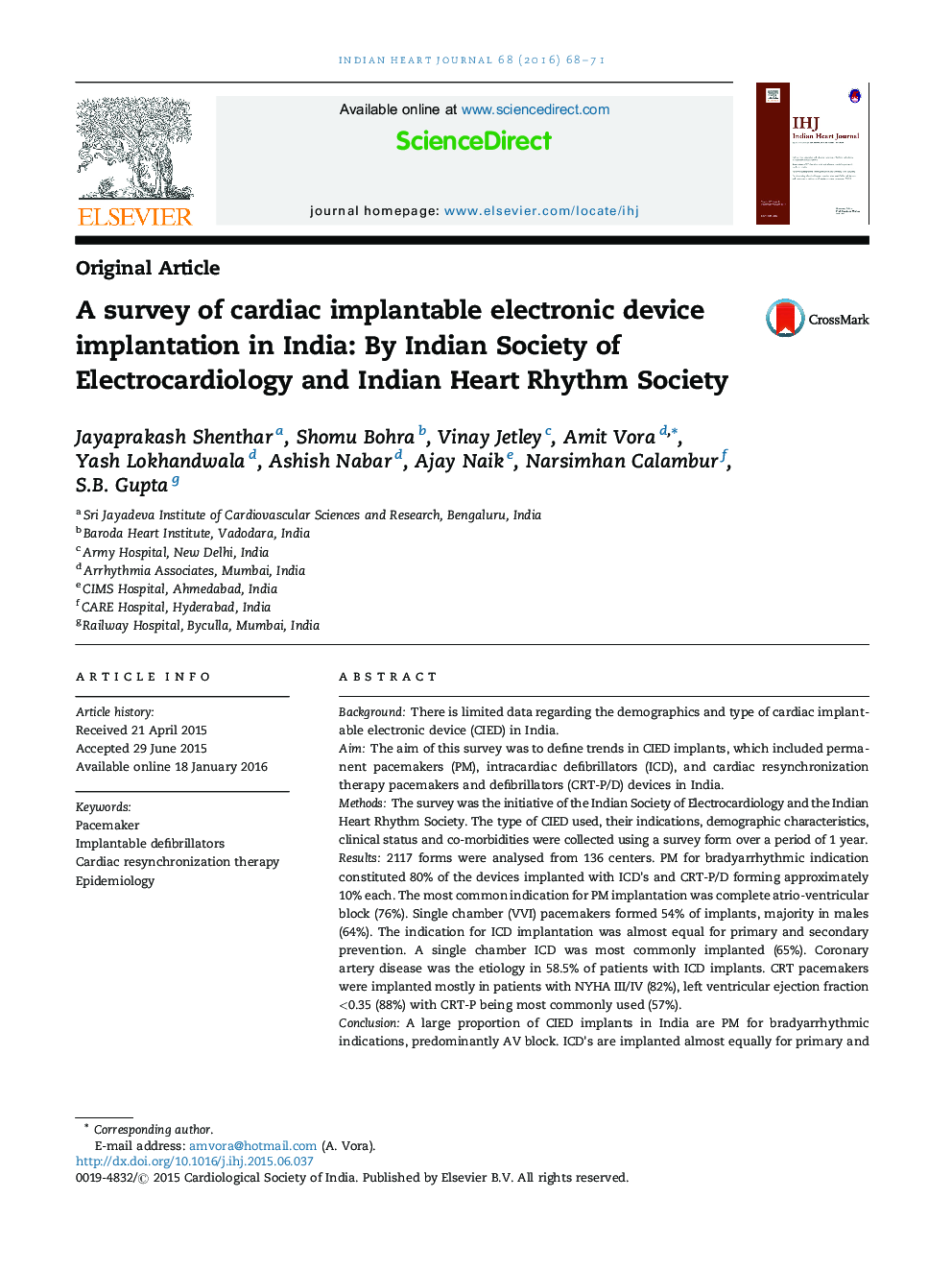| Article ID | Journal | Published Year | Pages | File Type |
|---|---|---|---|---|
| 2927522 | Indian Heart Journal | 2016 | 4 Pages |
BackgroundThere is limited data regarding the demographics and type of cardiac implantable electronic device (CIED) in India.AimThe aim of this survey was to define trends in CIED implants, which included permanent pacemakers (PM), intracardiac defibrillators (ICD), and cardiac resynchronization therapy pacemakers and defibrillators (CRT-P/D) devices in India.MethodsThe survey was the initiative of the Indian Society of Electrocardiology and the Indian Heart Rhythm Society. The type of CIED used, their indications, demographic characteristics, clinical status and co-morbidities were collected using a survey form over a period of 1 year.Results2117 forms were analysed from 136 centers. PM for bradyarrhythmic indication constituted 80% of the devices implanted with ICD's and CRT-P/D forming approximately 10% each. The most common indication for PM implantation was complete atrio-ventricular block (76%). Single chamber (VVI) pacemakers formed 54% of implants, majority in males (64%). The indication for ICD implantation was almost equal for primary and secondary prevention. A single chamber ICD was most commonly implanted (65%). Coronary artery disease was the etiology in 58.5% of patients with ICD implants. CRT pacemakers were implanted mostly in patients with NYHA III/IV (82%), left ventricular ejection fraction <0.35 (88%) with CRT-P being most commonly used (57%).ConclusionA large proportion of CIED implants in India are PM for bradyarrhythmic indications, predominantly AV block. ICD's are implanted almost equally for primary and secondary prophylaxis. Most CRT devices are implanted for NYHA Class III. There is a male predominance for implantation of CIED.
